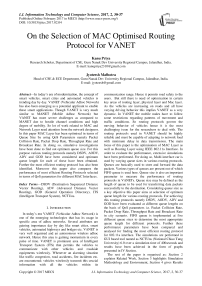On the Selection of MAC Optimised Routing Protocol for VANET
Автор: Kanu Priya, Jyoteesh Malhotra
Журнал: International Journal of Information Technology and Computer Science(IJITCS) @ijitcs
Статья в выпуске: 2 Vol. 9, 2017 года.
Бесплатный доступ
In today's era of modernization, the concept of smart vehicles, smart cities and automated vehicles is trending day by day. VANET (Vehicular Adhoc Network) has also been emerging as a potential applicant to enable these smart applications. Though VANET is very much similar to MANET (Mobile Adhoc Network) but VANET has more severe challenges as compared to MANET due to hostile channel conditions and high degree of mobility. So lot of work related to MAC and Network Layer need attention from the network designers. In this paper MAC Layer has been optimised in terms of Queue Size by using QoS Parameters namely Packet Collision Rate, Packet Drop Rate, Throughput Rate and Broadcast Rate. In doing so, simulative investigations have been done to find out optimum queue size. For this purpose various routing protocols namely DSDV, AODV, ADV and GOD have been considered and optimum queue length for each of these have been obtained. Further the most efficient routing protocol has also been identified. Moreover this paper also compares the performance of most efficient Routing Protocols selected in terms of QoS parameters for different MAC Interfaces.
DSDV (Destination Sequenced Distance Vector Routing), ADV (Advanced Distance Vector Routing), GOD (General Operation Directory), ITS (Intelligent Transport System), NCTUns
Короткий адрес: https://sciup.org/15012617
IDR: 15012617
Текст научной статьи On the Selection of MAC Optimised Routing Protocol for VANET
Published Online February 2017 in MECS DOI: 10.5815/ijitcs.2017.02.04
The rest of the paper is organised as: Section 2 explains Related Work, Section 3 highlights Simulation Methodology and Environment, Section 4 gives Results and Discussions and at last Section 5 concludes the paper.
-
II. Related Work
Several researchers have carried out analysis of different routing Protocols on the basis of QoS Parameters by performing simulations on different network simulators. In [2] the comparison of protocols namely AODV, DSR and AODV have been done by considering performance parameters like CBR (Constant Bit Rate) traffic on the basis of network throughput, data packet latency and packet delivery rate. Adhoc On demand Multipath distance vector routing (AOMDV) protocol has been proposed in [3] that uses queue length estimation technique in order to reduce the congestion in sending the data packets and RREQ. More specifically for reliable and efficient communication, a load balancing algorithm has been designed and implemented in this paper. In [4] the most efficient routing protocol has been selected among AODV, ADV and GOD for emergency situations in highway scenarios on the basis of performance metrics- network loss, transmission delay, throughput and collision rate. The reactive routing protocols namely AODV, DSR and AOMDV have been compared in [5] by changing parameters like node speed, mobility and sources that use various performance metrics. Two types of graphs were generated in mobility model like space graph and user defined. They concluded that AOMDV protocol has major drawback that it requires large routing load due to its degraded performance in space graph model.
In the earlier reported work, the focus is only on the evaluation of routing protocols. However in this work cross layer approach has been adopted by considering parameters of MAC Layer along with Network Layer. For this purpose queue size is considered as the most significant parameter. Considering this as a goal, this paper aims to find out optimum queue length for various routing protocols and hence determine the most efficient routing protocol on the basis of performance of QoS parameters and also compares the performance of MAC Interfaces.
-
III. Simulation Methodology and Environment
For real time traffic environment, a platform is required for carrying both network and traffic simulations. NCTUns 6.0 (National Chiao Tung University) is a hybrid simulator and is based upon kernel re-entering methodology. It can simulate 802.11a, 802.11b, 802.11g, 802.11e technologies and uses TCP/IP stack for packets transmission [13].
-
A. Performance Metrics
The important performance parameters that have been identified in this work are:
-
• Packet Collision Rate: It implies the number of packets that collide per second. For optimum
performance packet collision rate should be as low as possible.
-
• Packet Drop Rate: The number of packets that get dropped in network and as a result they are unable to reach the destination successfully defines the Packet Drop Rate. More packet drop rate deteriorates the performance of routing protocols.
-
• Broadcast Rate: It defines the total number of broadcasted packets successfully reaching the destination per unit time. More is the packet broadcast rate, better is the performance.
-
• Throughput Rate: It defines the total number of data packets successfully delivered at the destination node. It is calculated in NCTUns as “unpublished” [6] -
- t = P [6]
Ts where
T= Throughput
N= Number of packet delivered at destination
Ps= Packet Size
Ts= Total time
-
B. Routing Protocols
In this optimization work, routing protocols namely DSDV, AODV, ADV and GOD have been evaluated on the basis of aforementioned parameters.
-
C. Simulation Scenario
A simulation scenario has been created using ‘Draw’ feature of NCTUns for the selection of optimum queue size for various routing protocols. Multi interface car is used as a vehicle that moves on the road network. It supports various network interfaces out of which 802.11a interface has been used in this paper. The various parameters (of multi interface car and adhoc mobile nodes) are set using ‘Edit’ feature of NCTUns as shown in the following table.
Table 1. Simulation Parameters
|
Parameters |
Values |
|
MAC |
802.11a |
|
Routing Protocols |
DSDV, AODV, ADV, GOD |
|
Queue Type |
FIFO |
|
Queue Sizes(packets) |
10,25,50,75,100 |
|
Transmission Power(dbm) |
15 |
|
Frequency(MHz) |
2400 |
|
Speed (Kmph) |
36 |
|
Link Bandwidth(Mbps) |
11 |
|
Path Loss Model |
Two Ray Ground |
|
Street Width(m) |
30 |
|
Communication |
Full Duplex |
|
Traffic Tool |
stg, rtg |
|
Antenna Gain(dpi) |
1 |
|
NCTUns Version |
6.0 |
|
Simulation time |
400 |
After parameters setting, the simulations are run using ‘Run’ feature available in NCTUns and results are obtained as shown in next section. The following figure shows the simulation scenario having wireless access points, adhoc mobile nodes, host computer and multi interface car equipped with 802.11a interface.
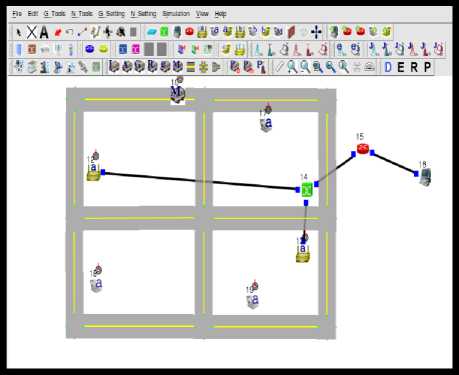
Fig.1. Simulation Scenario
-
IV. Results and Discussion
The graphs listed below shows the effect of changing queue length on performance of routing protocols. The graphs are based on following parameters:
-
• Packet Collision Rate
-
• Packet Drop rate
-
• Throughput Rate
-
• Broadcast Rate
-
A. Simulative Investigation of DSDV Protocol
The following graphs depict the results in the form of graphs of aforementioned performance parameters. The simulations are performed by considering five different queue lengths i.e. 10,25,50,75 and 100 packets. “Fig 2” depicts the packet Collision Rate in DSDV protocol at five queue sizes. It is determined from the graph that this protocol shows more no. of collisions when queue size is increased. At smaller queue lengths, number of collisions is comparatively lesser than that of larger queue sizes. “Fig 3” depicts the Packet Drop Rate at different queue lengths. Again with increase in queue length more number of packets is dropped and hence performance is degrades. “Fig 4” and “Fig 5” depicts the Throughput Rate and Broadcast Rate. It is evaluated that in this protocol maximum throughput rate is above 500 which is significant for 10, 25 and 50 queue sizes whereas broadcast rate is maximum at queue length less than 50 packets i.e. more packets are broadcasted when queue size is less than 50 packets. Hence it is clear that in DSDV Protocol optimum results are obtained when queue size is less than 50 packets.
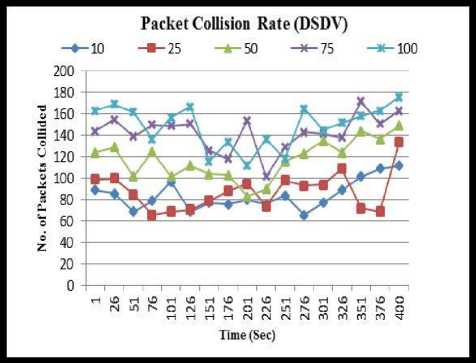
Fig.2. Packet Collision Rate using different queue sizes in DSDV Protocol
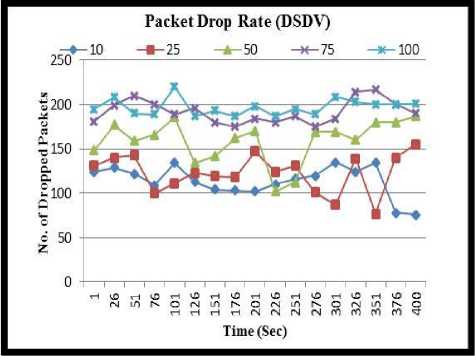
Fig.3. Packet Drop Rate using different queue sizes in DSDV Protocol
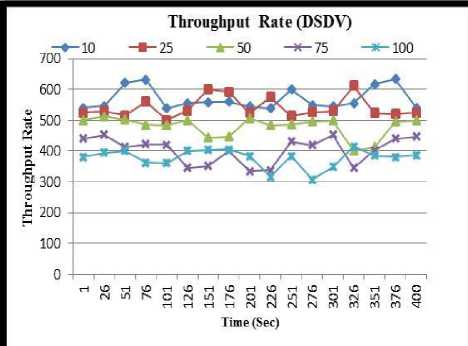
Fig.4. Throughput Rate using different queue sizes in DSDV Protocol
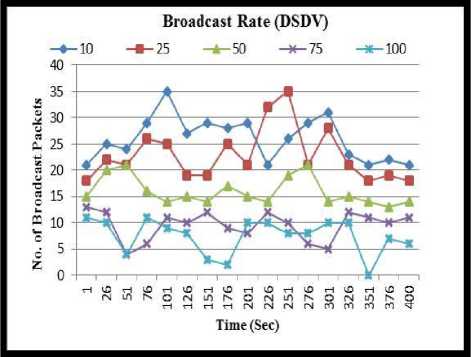
Fig.5. Broadcast Rate using different queue sizes in DSDV Protocol
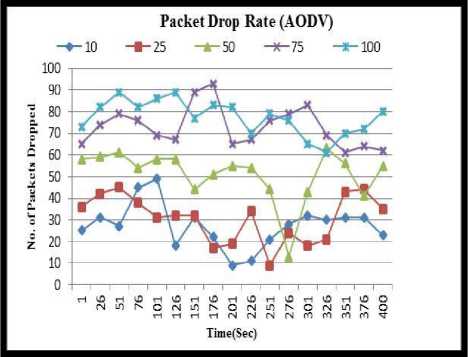
Fig.7. Packet Drop Rate using different queue sizes in AODV Protocol
-
B. Simulative Investigation of AODV Protocol
“Fig 6” depicts the packet collision rate in AODV Protocol. As AODV is a reactive routing protocol, its results are much better than DSDV. If we individually compare the no. of collisions at various queue sizes then it is evaluated that AODV has lesser no. of colliding packets. Here also with increase in queue size the no. of collisions increase and optimum results are obtained at smaller queue lengths. Further “Fig 7” depicts Packet Drop Rate, it is noticed that at smaller queue size the number of dropped packets are much less than larger queue size. Optimum results are obtained at queue length below 50 packets. At higher queue sizes, more packets are dropped. “Fig 8” depicts throughput rate at different queue sizes. It is clear that optimum throughput values are obtained at queue lengths 50 packets and above. If we consider the average values it is clear that all queue lengths except for 100 packets length throughput rate is above 500 bytes/sec. “Fig 9” depicts the broadcast rate of data packets. It is evaluated that at smaller queue size more data packets are broadcasted successfully to the destination. Hence it is determined that for AODV Protocol, optimum queue length is below 50 data packets.
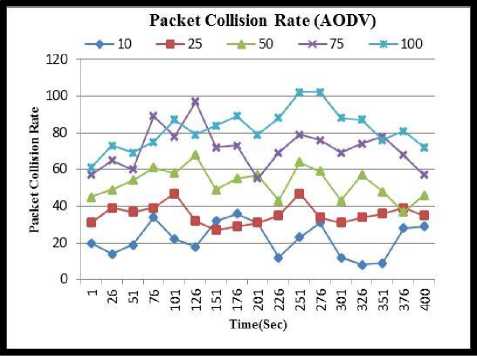
Fig.6. Packet Collision Rate using different queue sizes in AODV Protocol
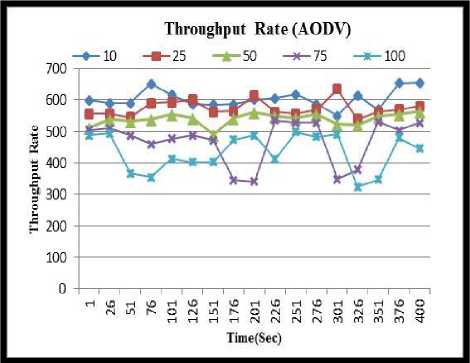
Fig.8. Throughput Rate using different queue sizes in AODV Protocol
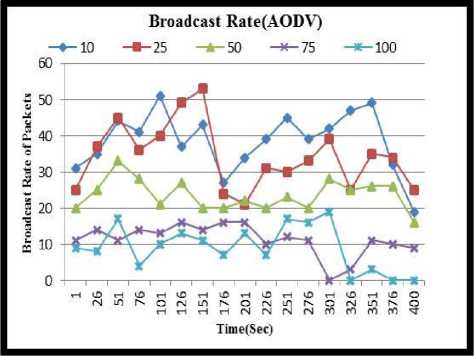
Fig.9. Broadcast Rate using different queue sizes in AODV Protocol
-
C. Simulative Investigation of ADV Protocol
“Fig. 10” depicts the packet collision rate in ADV Protocol. It is determined that being a hybrid routing protocol the results of this protocol are superior than any other protocol discussed so far. The no. of collisions is very less when queue size is below 50 packets. It is less among all the routing protocols discussed in this paper. “Fig 11” depicts packet drop rate. It is determined that no. of packet dropped are less than any other protocol and at queue size 50 and less than it lesser no. of packets are dropped. This implies that smaller queue sizes are more proficient. “Fig 12” and “Fig 13” depicts the Throughput rate and Broadcast rate. From both the graphs it is examined that smaller queue sizes are more effective than larger queue sizes.
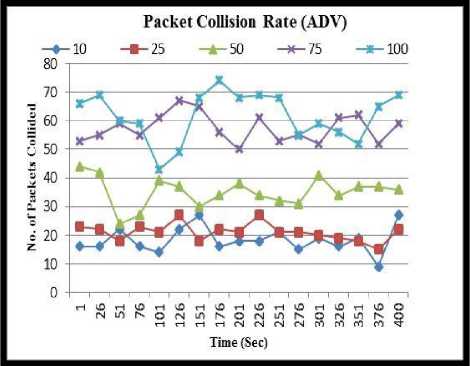
Fig.10. Packet Collision Rate using different queue sizes in ADV Protocol
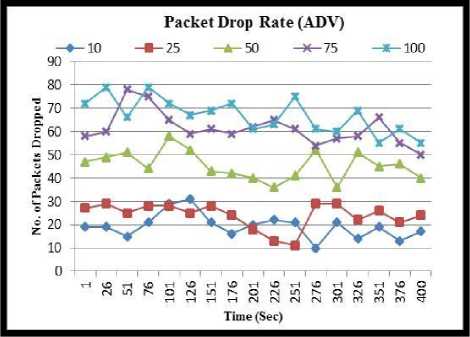
Fig.11. Packet Drop Rate using different queue sizes in ADV Protocol
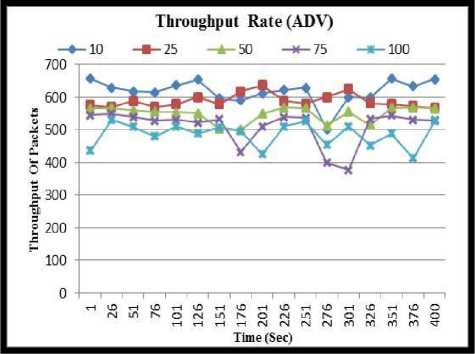
Fig.12. Throughput Rate using different queue sizes in ADV Protocol
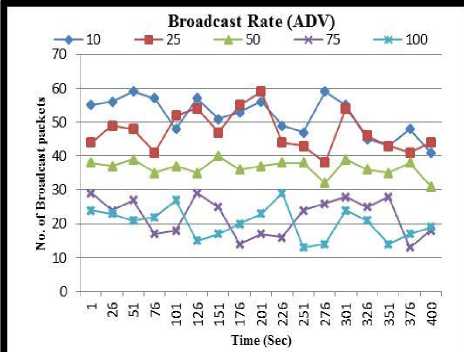
Fig.13. Broadcast Rate using different queue sizes in ADV Protocol
-
D. Simulative Investigation of GOD
In GOD the results produced are comparatively different from other protocols. In this protocol “Fig 14” depicts packet collision rate. It is determined that in this protocol, with increase in queue size from 10 to 25 packets no. of packet collisions increase whereas at 50 queue size the packet collisions are dropped to small value but with again increase in queue size, the packet collisions keeps on increasing vibrantly. “Fig 15” explains the packet drop rate. Here again at 50 packet queue length, no. of packets dropped are extremely less than at remaining queue sizes. Further “Fig 16” and “Fig 17” shows the Throughput Rate and Broadcast Rate. Again at 50 packet queue size more broadcast packets are reaching the destination and hence maximum is the throughput achieved.
Packet Collision Rate (GOD)
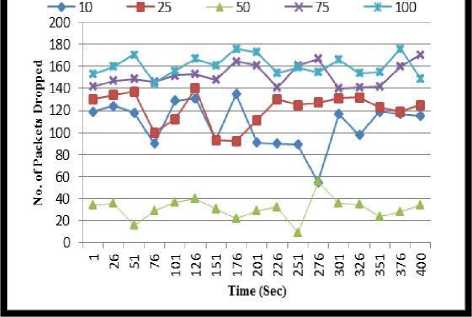
Fig.14. Packet Collision Rate using different queue sizes in GOD Protocol
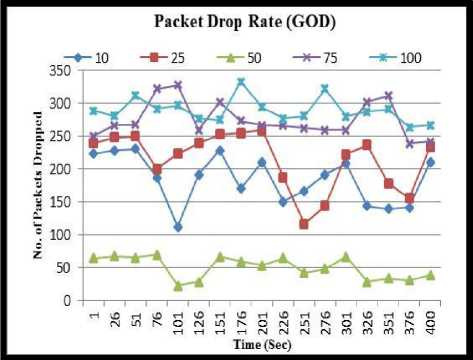
Fig.15. Packet Drop Rate using different queue sizes in GOD Protocol
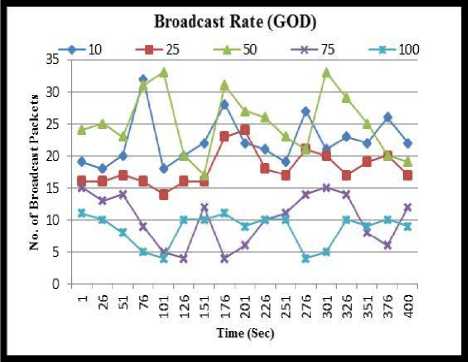
Fig.17. Broadcast Rate using different queue sizes in GOD Protocol
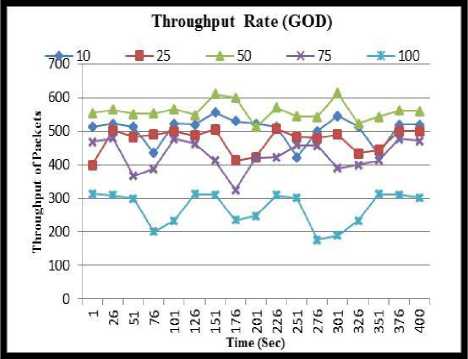
Fig.16. Throughput Rate using different queue sizes in GOD Protocol
Following “Table 2” shows the comparison of average values obtained in routing protocols namely AODV, ADV, DSDV and GOD on the basis of QoS parameters at five different queue lengths.
Above “Table 2” depicts the performance of four routing protocols at 10, 25, 50 75 and 100 packets queue size in terms of QoS Parameters. After analysing the graphs and above table it is determined that all the routing protocols give better performance at small queue sizes except in GOD in which optimum results are obtained at 50 packet queue length. It is clear that in DSDV, AODV and ADV routing protocols, with increase in queue size the performance start degrading. As the queue size increases from 10 to 100 packets, the number of packet collisions per unit time, packet drop rate keeps on increasing gradually. Greater is the queue length more
Table 2. Comparative Performance of Routing Protocols v/s Queue Size
GOD optimum queue length is 50 data packets. Further results of AODV and ADV are considered to be efficient. At last after evaluating performance of all QoS parameters, ADV is chosen as the most efficient Routing protocol for this scenario.
Table 3. Comparison of MAC Interfaces
|
Comparative Analysis of ADV Protocol in two MAC Interfaces |
|||
|
ADV Protocol in 802.11a MAC |
ADV Protocol in 802.11b MAC |
||
|
QoS Parameters |
Queue Size |
||
|
Packet Collision Rate |
10 |
14.322 |
19.121 |
|
25 |
22.131 |
27.218 |
|
|
50 |
41.914 |
54.379 |
|
|
75 |
53.216 |
61.823 |
|
|
100 |
66.471 |
74.890 |
|
|
Packet Drop Rate |
10 |
19.324 |
26.331 |
|
25 |
27.761 |
38.379 |
|
|
50 |
47.913 |
59.823 |
|
|
75 |
52.635 |
76.382 |
|
|
100 |
68.124 |
83.786 |
|
|
Throughput Rate |
10 |
612.987 |
594.315 |
|
25 |
573.123 |
561.743 |
|
|
50 |
565.981 |
550.923 |
|
|
75 |
549.435 |
512.959 |
|
|
100 |
525.298 |
493.468 |
|
|
Broadcast Rate |
10 |
54.231 |
45.219 |
|
25 |
43.890 |
37.291 |
|
|
50 |
36.927 |
26.301 |
|
|
75 |
28.984 |
22.878 |
|
|
100 |
21.456 |
15.834 |
|
The above “Table 3” compares the performance of ADV Protocol in terms of QoS parameters on the basis of variable queue size in 802.11a and 802.11b MAC Interfaces. Through simulative investigations in “unpublished” [14] ADV protocol has been chosen as the most efficient routing protocol on the basis of queue size. The above table compares the performance of ADV protocol in both MAC Interfaces. It is clear from the above table that ADV Protocol in 802.11a protocol gives more superior results than in 802.11b. More specifically at the optimum queue size of 10 packets, the Packet Collision Rate in 802.11b is 4.79% more than in 802.11a; the Packet Drop Rate is 7% less in 802.11a than 802.11bMAC. More is the packet drop rate; it results in degrading overall throughput of VANET. Hence the throughput rate is 18.67% greater in 802.11a MAC than 802.11b. Although ADV Protocol gives optimum results in both MAC Interfaces but to evaluate the Interface in which more optimum results are produced work has been done in this paper. Hereafter analysing the performance of all QoS parameters we can say that ADV Protocol outperforms in 802.11a MAC than in 802.11bMAC.
-
V. Conclusion
-
802.11b MAC. Hence after investigating the simulation results it is found that ADV Protocol gives comparatively enhanced performance in 802.11a MAC than in 802.11b. The results produced in this paper are of great significance for the researchers working on queue size optimisation techniques.
In order to select the MAC Optimised Routing Protocol for VANET, work has been done in this paper. The goal of this paper is twofold. Firstly this paper investigates the optimum queue size for various routing protocols. After performing extensive simulations and examining the performance of QoS Parameters it has been evaluated that small queue size gives more optimum results. For AODV, ADV and DSDV 10 queue size gives comparatively better results than larger queue sizes whereas for GOD 50 packet queue size is chosen optimum. Secondly this paper investigates the optimised Routing protocols for MAC Interfaces. For 802.11a MAC ADV has been chosen as the most optimum routing protocol in terms of important QoS Parameters namely Packet Collision Rate, Packet Drop Rate, Throughput Rate and Broadcast Rate. At different queue sizes ADV Protocol gives more superior results than other protocols. For 802.11b MAC also in [14] ADV was chosen as the most efficient protocol in terms of QoS Parameters with an optimum queue size of 10 packets. By Comparing the performance of ADV in both MAC Interfaces it is determined that ADV outperforms in 802.11a MAC than
Список литературы On the Selection of MAC Optimised Routing Protocol for VANET
- M.S. Anwer, C. Guy, “A Survey of VANET Technologies”, Journal of Emerging Trends in Computing and Information Sciences, Vol.5, No.9, 661-671, 2014.
- R. V. Boppana, S. P. Konduru, “An Adaptive Distance Vector Routing Algorithm for Mobile Ad Hoc Networks”, IEEE INFOCOM , 1753-1762, 2001.
- A. Shukla, S. Sharma, “Queue Length based Load Balancing Technique using with AOMDV Protocol in MANET”, International Journal of Scientific & Engineering Research, Volume 4, Issue 10, 506-511, 2013.
- E. Jazayerifar, R. S. Nadooshan, “Performance Evaluation of AODV and ADV Routing Protocols in Safety Situations in Highway Environment”, World appl. programming, Vol(5), No (8), 120-124, 2015.
- Shaikhul Islam Chowdhury, Won-Il Lee, Youn-Sang Choi, Guen-Young Kee, and Jae-Young Pyun, “Performance Evaluation of Reactive Routing Protocols in VANET,”17th Asia-Pacific Conference on Communications (APCC) IEEE 2011 pp. 559-564.
- Kanu Priya and Jyoteesh Malhotra, “Optimisation of MAC Layer to mitigate the effect of increased Mobility in VANET,” accepted in Second International Conference Innovative Applications of Computational Intelligence on Power, Energy and Control with their impact on Humanity 18-19 November, 2016.
- K. Lee, U. Lee, and M. Gerla, “Survey of Routing Protocols in Vehicular Adhoc Networks,” in Advances in Vehicular Ad-Hoc Networks: Developments and Challenges. Hershey, PA: IGI Global, 2009.
- B. Paul, “VANET Routing Protocols: Pros and Cons” International Journal of Computer Applications, vol. 20, no.3, 2011.
- T. Larson, N. Hedman, “Routing Protocols in Wireless Ad Hoc Network – A Simulation Study”, Department of Computer Science and Electrical Engineering, Lulea University of Technology, Stockholm, 1998.
- R. Anggoro, "Performance Evaluation of AODV and AOMDV with Probabilistic Relay in VANET Environments," in Third International Conference on Networking and Computing, pp. 259-263, 2012.
- M. Abolhasan, T. Wysocki and E. Dutkiewicz, “A review of routing protocols for mobile ad hoc networks”, Ad Hoc Networks , pp. 1–22, 2004.
- C. Perkins, E. Royer, “Ad-hoc on-demand Distance Vector Routing,” Proc. 2nd IEEE Wksp. Mobile Comp. Sys. App., pp. 90–100, 1999.
- M. Abolhasan, T. Wysocki and E. Dutkiewicz, “A review of routing protocols for mobile ad hoc networks”, Ad Hoc, pp. 1–22, 2004.
- Kanu Priya and Jyoteesh Malhotra, “On the Selection of Queue Optimised Routing Protocol in VANET,” accepted in International Journal of Advanced Science and Technology, www.sersc.org/journals/IJAST, 2016.
- A GUI based user manual for NCTUns6.0 simulator.

